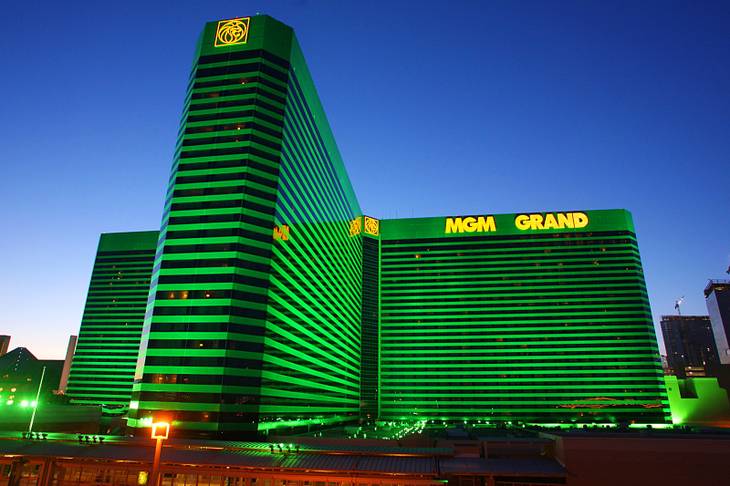Sun Topics
In a glimmer of improvement for the struggling Las Vegas economy and its largest private employer, financial analysts in New York on Wednesday boosted their outlook for MGM Resorts International.
With 54,300 employees and nearly 42,000 hotel rooms in the Las Vegas area, where it operates 10 casino resorts on the Strip and two properties in nearby Jean and Henderson, MGM Resorts is booking more of those rooms and at higher rates as visitation to the city approaches pre-recession levels.
The trend isn’t likely to produce a short-term effect on the city’s high unemployment and foreclosure rates — or stop a slide in local home prices — as UNLV researchers say the local economy remains in a deep slump because of such factors as the near-decimation of the local construction industry.
But the improved prospects for MGM Resorts are a sign that the slow rebound for the local tourism sector is continuing. That’s a welcome improvement for the city’s main industry, which saw visitation to Las Vegas plummet as the U.S. recession deepened in 2009.
Standard & Poor’s, one of the main debt raters in New York, said it boosted MGM Resorts’ corporate credit rating from CCC+ to B-. The ratings cover the ability of MGM Resorts to pay its debt obligations.
Standard & Poor’s also said its rating outlook for the company was stable, as it boosted ratings on MGM Resorts’ senior secured notes, senior unsecured notes and subordinated debt.
“The rating upgrade reflects MGM’s solid performance thus far in 2011, and our expectation that MGM will continue benefiting from improving performance trends on the Las Vegas Strip, particularly on the lodging side of the business,” Standard & Poor’s analysts Ben Bubeck and Melissa Long wrote in a report on the company.
On Nov. 3, MGM Resorts reported a narrower third-quarter loss over the same period last year thanks in part to higher occupancy percentages and higher rates at its Strip resorts.
At the 4,752-room Mandalay Bay, for instance, occupancy improved year-to-year from 91 percent to nearly 96 percent, and the average daily room rate rose from $164 to $175.
The company said that despite U.S. economic uncertainties, travelers continued to visit Las Vegas in growing numbers and that it was capitalizing on that trend.
At MGM Resorts’ nine wholly owned Strip resorts, excluding the half-owned CityCenter, the Standard & Poor’s analysts said they expect the increase to continue with “modest, low-single-digit percentage growth” in net revenue during the remainder of 2011 and in 2012.
“We expect MGM’s wholly owned EBITDA to grow in the high-single-digit percentage area in 2011 and 2012, because continued strength on the lodging side of the business and improved operating leverage after recent cost-containment actions should result in improved operating margins,” the analysts’ report said. “The gradual economic recovery and continuing positive momentum in visitation to the Las Vegas Strip should propel this improvement.”
EBITDA is a profitability measure meaning earnings before interest, taxes, depreciation and amortization.
Standard & Poor’s said that on top of the improvements at MGM Resorts’ wholly owned properties — including Bellagio, Mandalay Bay and the MGM Grand — CityCenter performed well during the first nine months of 2011.
They said the operation contributed EBITDA of about $170 million, more than double its performance during the same period of 2010.
The Standard & Poor’s analysis does not include MGM China, where the company operates one resort in Macau and is planning to develop another. MGM China could factor into the ratings calculations at some point should it start providing a meaningful level of financial support to MGM Resorts’ U.S. operations, the analysts said.
Wednesday’s rating report on MGM Resorts included the usual caveats.
First, the company with $13 billion in debt remains highly leveraged.
Second, the Standard & Poor’s analysts say they “remain somewhat cautious about growth prospects on the Las Vegas Strip in 2012 and beyond, given the still-weak economy, despite stronger-than-expected performance thus far in 2011.”
